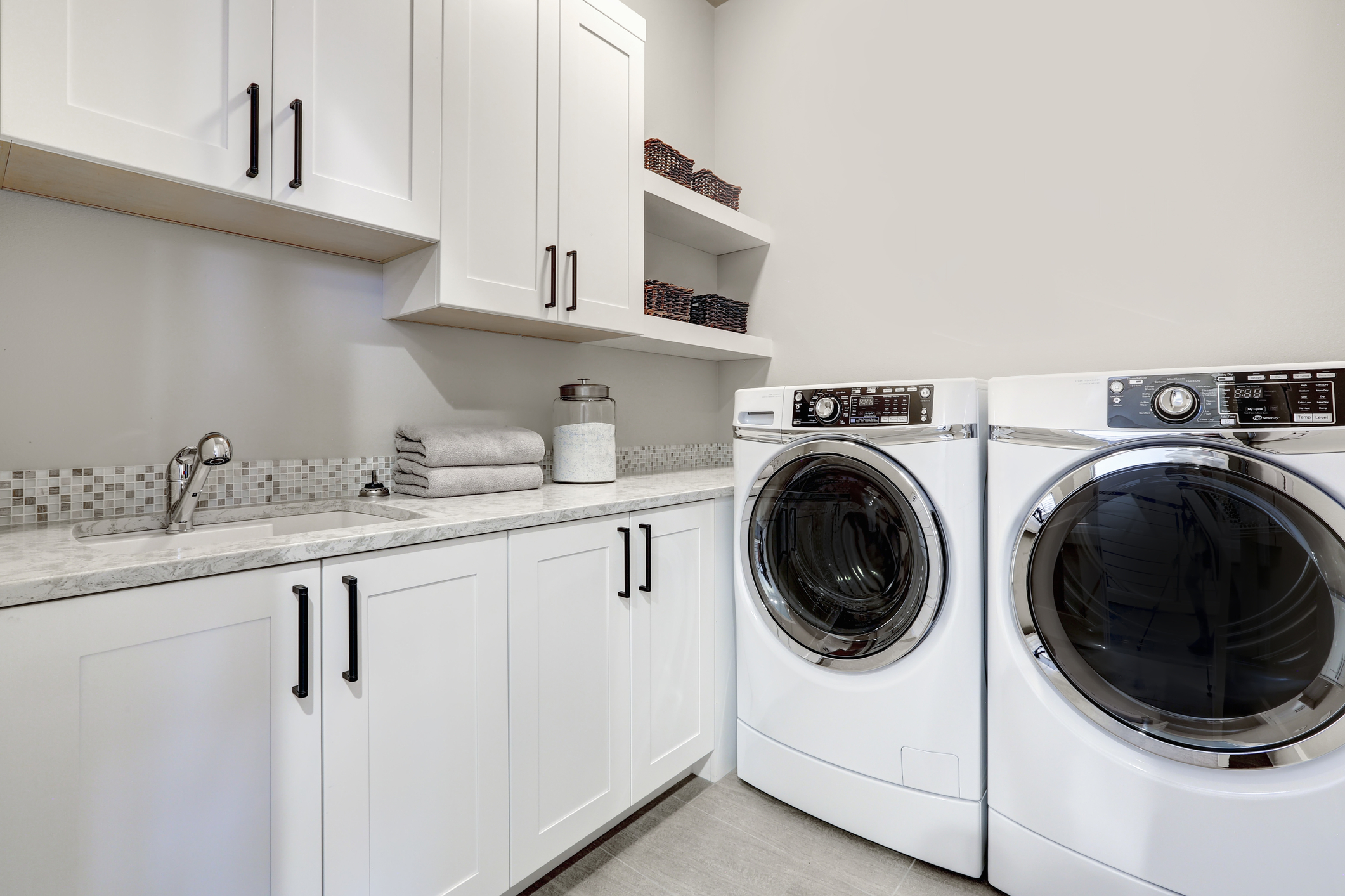Although we use household appliances every day, it’s easy to forget how vulnerable they are to mold growth. Leaks and excess moisture can lead to water damage and mold or mildew buildup. Check your appliances and the spaces around them to ensure that they don’t become a breeding ground for mold to grow.
Refrigerator Mold
Refrigerators generate heat to keep foods and beverages cool. The condensate pan underneath can retain water, potentially leading to mold issues under or behind the appliance. Clean under and behind your fridge at least once a year. Pay attention to any leaks, warping, or discoloration in the floor around it, too.
Check your fridge for old, moldy food items at least once monthly. Remove all the food and drinks and wipe the drawers and shelves thoroughly. If you can soak pieces in soapy water, rinse, and wipe dry.
Dishwasher Mold
While you would quickly take notice of puddles or floor damage in front of your dishwasher, it’s important to inspect your machine regularly for potential issues as well. Dishwashers use lots of warm water, creating an ideal environment for mold to take hold. Leaks often happen where the water enters the machine, and damp food bits may get left behind and collect in filters, interior panels, or other hidden spots.
Be sure to clean out food particles after each wash and leave the front door open to let your dishwasher air out once weekly or so. Run a self-cleaning or empty cycle monthly with vinegar or a dishwasher cleaner to remove hard water and soap buildup. Also, clean the door seals with a household cleaner to prevent mold growth.
Clothes Washer Mold
Laundry washers use plenty of water, too, and they can create excess humidity in your space without proper ventilation. Check your machine regularly to see that the fittings on the back aren’t leaking. Make sure that the drain line is fastened securely, too.
Front Load Washing Machine Mold
The door on a front load machine is prone to trap moisture within its seals. The detergent containers can also retain water and moisture, allowing mold to grow. When your washer finishes a cycle, remove your load and let the door and detergent drawers air out. Run a sanitizing cycle at least once monthly or run a hot water cycle with a special cleaning solution or bleach. Check and clean the seals as well.
Top Load Washing Machine Mold
Top load washers don’t have door seals, but the inside of the drum needs to air out occasionally. You should run a cleaning cycle at least once a month, too. Wipe the top of the drum and inside cups with household cleaners. Check inside and around the washer regularly to ensure no mold is growing.
Clothes Dryer Mold
Dryers are meant to eliminate dampness from clothing and other items. If any moisture gets trapped inside, mold can easily begin growing. Excess lint, dust, and particles can accumulate within a dryer vent, eventually blocking airflow through the pipes. Your vent system and the flap should be properly installed and kept clean to ensure that the moisture escapes outdoors during the drying cycle.
Hot Water Heater Mold
Condensation can collect around your hot water heater and make the space around it more susceptible to mold growth. Leaks may start small and go undetected due to the following:
- the appliance’s age
- hard water
- sediment buildup
- high water pressure
To help avoid mold growth around your hot water heater, inspect for leaks and corrosion. Drain the tank at least once a year to eliminate sediment. Set the water temperature at 120 degrees Fahrenheit to prevent overheating. Consider replacing your hot water heater after 7 or 8 years of use.
Don’t Let Mold Take Over Your Appliances
When it comes to household appliances, it’s best to limit mold risks before they become problems. Regular cleaning and maintenance can help extend the life of your items and control moisture in your space. For more tips to prevent mold from growing in your home, review these recommendations by the CDC and Florida Department of Health or contact your local mold remediation specialist.

